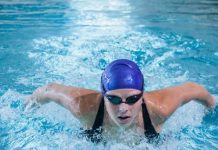People sometimes feel sore after exercising especially when beginning a new routine or increasing intensity. Muscle pain is unpleasant but knowing its causes might help manage it. Here are nine essential facts about muscular soreness.
1. Understanding Delayed Onset Muscle Soreness Doms
DOMS occurs hours to days after strenuous activity. It usually peaks 2472 hours post workout and fades as muscles heal. Eccentric muscular contractions such as lowering weights during strength training or descending steps while downhill jogging frequently cause DOMS.
DOMS is thought to be caused by tiny muscle fiber injury inflammation and the production of pain causing chemicals including lactic acid and cytokines. Although uncomfortable DOMS is a typical reaction to exercise, not a reason for worry. However significant or continuous discomfort may suggest muscular tension and should be treated.
2. Factors Contributing To Muscle Soreness
After exercise many variables affect muscle soreness degree and length. This includes
Intensity And Duration Of Exercise
Exercise at high intensities or for extended periods may cause muscular discomfort.
Unfamiliar Movements
Due to body adaptation new or unfamiliar activities or increasing the intensity or volume of old workouts may cause muscle discomfort.
Muscle Fatigue
Exercise Damages Tired Muscles Increasing Doms Risk.
Nutritional Factors
Insufficient hydration electrolyte imbalances and protein and carbohydrate consumption may slow muscle repair and increase discomfort.
Age And Fitness Level
Due to diminished muscle mass and healing ability older and less athletic people may suffer higher muscular discomfort.
Understanding these characteristics may help people adjust their workouts and lifestyle to reduce muscle discomfort and speed recovery.
3. Strategies For Managing Muscle Soreness
While muscular soreness is a typical result of exercise there are ways to reduce it and speed recovery
Gradual Progression
The body can adapt and avoid pain and damage by gradually increasing exercise intensity duration and frequency.
Proper Warm Up And Cool Down
Before and after exercise a complete warm up and mild stretching or foam rolling help prepare muscles and decrease pain.
Hydration And Nutrition
Hydration and a balanced diet of protein carbs and anti-inflammatory foods may help muscles heal and reduce discomfort.
Active Recovery
On rest days you may walk, swim or do yoga to increase muscle blood flow and reduce pain.
Massage And Foam Rolling
Massage treatment and foam rolling dissolve muscular adhesions and knots to relieve stress, enhance circulation and lessen pain.
These methods help people manage muscular discomfort and reach their fitness objectives. Listen to your body and modify your workouts to avoid overtraining and injury.
4. Role Of Recovery Strategies In Managing Muscle Soreness
Effective recovery procedures depend on managing muscular pain and good performance. Rest is a typical recovery approach that helps the body repair and rebuilds muscular tissue after activity. Muscle healing depends on sleep because the body produces growth hormones which repair and regenerate tissue.
In addition to rest, active recovery practices may speed healing and minimize muscular discomfort. Contrast water treatment improves blood circulation and reduces inflammation helping muscles recover.
Compression sleeves and stockings may also improve blood flow and minimize swelling reducing muscular discomfort and tiredness. Cryotherapy which involves brief exposure to freezing temperatures is another standard rehabilitation method. It may reduce discomfort and speed healing by constricting blood vessels and reducing inflammation.
However its effects on muscular pain and long term consequences require more study. Rest active recovery and recovery methods like contrast water therapy and cryotherapy may assist athletes and fitness enthusiasts in managing muscular discomfort and maximize performance.
5. Importance Of Proper Nutrition And Hydration
Nutrition affects muscle healing and pain intensity and length. Protein supplies amino acids required to repair and create muscle tissue thus eating enough is crucial. Carbohydrates replenish glycogen reserves the body’s primary energy source during activity while fats offer critical fatty acids for health and hormone balance.
Together with macronutrients micronutrients including vitamins and minerals help muscle repair and health. Fruits, vegetables and nuts contain antioxidants that prevent inflammation and oxidative stress which may cause muscular discomfort and tiredness. During exercise electrolytes including sodium potassium and magnesium are necessary for hydration and muscular function.
Muscle healing requires fluids because dehydration slows function and muscle rebuilding. Hydration transports nutrients to muscles, removes waste and regulates body temperature promoting recovery and reducing muscular discomfort. A balanced diet rich in protein carbs, healthy fats, vitamins , minerals and hydration may help muscles recover and reduce exercise induced muscular pain.
6. The Role of Mind Body Techniques in Managing Muscle Soreness
Mind body practices in addition to physical tactics help manage muscular discomfort and improve well being. Yoga meditation and deep breathing may decrease tension, relax and speed recovery from intensive activity. Through physical postures breathing and meditation yoga promotes flexibility, strength and awareness.
Forward folds and moderate twists may stretch tight muscles, reduce discomfort and speed healing. Yoga breath awareness and relaxation may also soothe the nervous system and lessen pain. Meditation and deep breathing may help relieve muscular discomfort and speed healing.
Mindfulness meditation helps people become more aware of their physical sensations and minimize discomfort by focusing on the present without judgment. Deep breathing activities like diaphragmatic breathing or progressive muscle relaxation may relieve muscular tension and pain. Mind body practices like yoga meditation and deep breathing promote physical healing, mental resilience and quality of life.
7. The Role Of Supplements In Muscle Recovery
Muscle healing and pain after strenuous activity are often supported by supplements. BCAAs like leucine isoleucine and valine are consumed to raise muscle protein synthesis and reduce muscle breakdown. BCAA supplementation before or during exercise may minimize exercise induced muscle damage and discomfort.
BCAA supplementation may reduce muscular soreness but additional study is required. Many athletes and fitness enthusiasts use creatine to improve muscle repair and performance. Increased muscle growth strength and power output from creatine supplementation may reduce muscular injury and discomfort after strenuous exercise.
Creatine may also help the body replenish ATP, the primary energy source for muscular contraction, speeding recovery between workouts. Creatine supplementation is safe and beneficial for most people but it may cause gastrointestinal discomfort in others. Proper hydration is necessary to avoid adverse effects.
8. Psychological Factors Influencing Muscle Soreness
Psychological variables affect muscular and physical discomfort. Research shows stress, worry and mood may affect pain sensitivity and muscle soreness after exercise. Stress increases muscular tension and reduces the body’s capacity to relax and recuperate worsening muscle discomfort.
Chronic stress may decrease immunological function and promote inflammation causing muscular discomfort and delayed recovery.
Progressive muscle relaxation guided imagery and mindfulness meditation may reduce stress and increase muscle repair by relaxing and lowering muscular tension.
9. When To Seek Medical Attention For Muscle Soreness
In some instances muscular discomfort after exercise may signal a significant underlying problem that needs medical treatment. Injury or overtraining syndrome may cause severe or prolonged muscular discomfort that does not improve with rest water or cautious therapy.
Muscular pain with swelling redness, warmth or loss of function may suggest muscular strain tendinitis or rhabdomyolysis.
Rhabdomyolysis, a rare but life threatening illness, breaks down muscle tissue and releases poisonous substances into circulation.
Symptoms include severe muscular pain swelling black urine exhaustion and disorientation. If neglected, rhabdomyolysis may cause renal damage, electrolyte abnormalities and other consequences. Symptoms need prompt medical care.
Conclusion
Optimizing exercise and well being requires knowledge about muscular soreness. By identifying its causes using efficient healing methods and treating physical and psychological concerns people may better manage muscular discomfort.
Preventing serious injury requires understanding when to seek medical assistance for severe or persistent aches. A comprehensive approach to muscle pain treatment may improve performance support fitness objectives and enjoy an active lifestyle.





